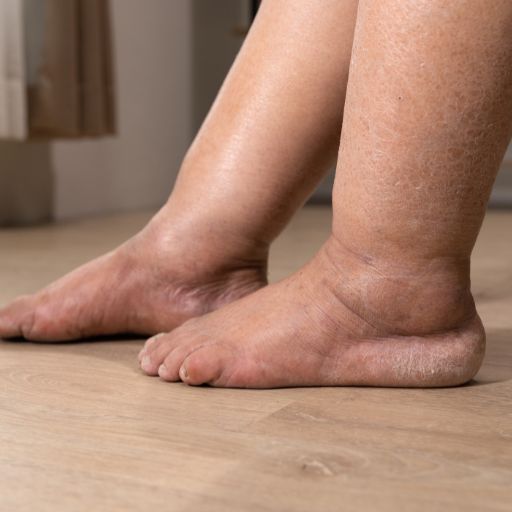
Navigating Life with Chronic Ankle Pain
Chronic ankle pain, though often overlooked, can have a profound impact on an individual’s quality of life. Whether it results from an injury, underlying medical conditions, or wear and tear over time, chronic ankle pain is more than just a physical ailment—it’s a persistent challenge that affects one’s mobility, emotional well-being, and overall sense of normalcy. In this comprehensive blog post, we will delve into the world of chronic ankle pain, exploring its causes, symptoms, diagnosis, and various treatment options to help you understand, manage, and find relief from this often-underestimated condition.
Chronic ankle pain refers to long-lasting discomfort or pain in the ankle joint, typically persisting for three months or more. Unlike acute ankle pain, which often arises from a specific injury like a sprain or fracture and usually heals within a few weeks, chronic ankle pain can result from various underlying causes, making it a complex and challenging condition to address.
Understanding The Pain
Chronic ankle pain refers to long-lasting discomfort or pain in the ankle joint, typically persisting for three months or more. Unlike acute ankle pain, which often arises from a specific injury like a sprain or fracture and usually heals within a few weeks, chronic ankle pain can result from various underlying causes, making it a complex and challenging condition to address.
Chronic ankle pain refers to long-lasting discomfort or pain in the ankle joint, typically persisting for three months or more. Unlike acute ankle pain, which often arises from a specific injury like a sprain or fracture and usually heals within a few weeks, chronic ankle pain can result from various underlying causes, making it a complex and challenging condition to address.
Common Causes Of The Pain
- Previous Injuries: A history of ankle injuries, such as sprains or fractures, can lead to chronic pain and instability in the ankle joint. Inadequate healing or improper rehabilitation can exacerbate the problem.
- Arthritis: Osteoarthritis and rheumatoid arthritis can affect the ankle joint, causing chronic pain, stiffness, and reduced mobility.
- Tendinitis: Inflammation or irritation of the tendons in the ankle, often due to overuse or repetitive strain, can lead to chronic pain.
- Nerve Compression: Conditions like tarsal tunnel syndrome, where a nerve in the ankle becomes compressed, can cause persistent pain, tingling, or numbness.
- Chronic Ankle Instability: Frequent ankle sprains or ligament injuries can result in chronic instability, leading to ongoing pain and difficulty walking.
Symptoms of Chronic Ankle Pain
The symptoms of chronic ankle pain can vary depending on the underlying cause but often include:
- Persistent or recurring pain in the ankle joint
- Swelling and inflammation
- Stiffness and reduced range of motion
- Instability or a feeling of “giving way”
- Numbness or tingling in the foot or ankle
- Difficulty bearing weight on the affected ankle


Diagnosing The Pain
To effectively address chronic ankle pain, an accurate diagnosis is crucial. Diagnosis typically involves the following steps:
- Medical History: Your healthcare provider will ask about your symptoms, any prior ankle injuries, and your medical history.
- Physical Examination: A physical examination may include assessing your ankle’s range of motion, stability, and areas of tenderness.
- Imaging: X-rays, CT scans, or MRI scans may be ordered to visualize the ankle joint and identify any structural abnormalities, such as arthritis or ligament damage.
- Nerve Tests: Electromyography (EMG) and nerve conduction studies can help evaluate nerve function and identify any compression or damage.
Treatment Options for Chronic Ankle Pain
The approach to treating chronic ankle pain depends on its underlying cause, severity, and the patient’s specific needs. Here are some common treatment options:
- R.I.C.E. Protocol: Rest, ice, compression, and elevation can help alleviate pain and reduce swelling in cases of acute exacerbations.
- Physical Therapy: Physical therapy aims to improve ankle strength, flexibility, and stability. Therapists can also teach techniques for pain management and proprioception training to prevent future injuries.
- Medications: Over-the-counter pain relievers, such as NSAIDs, or prescription medications may be recommended to manage pain and reduce inflammation.
- Orthotics: Custom-made or over-the-counter orthotic devices can provide support, improve alignment, and alleviate chronic ankle pain.
- Corticosteroid Injections: In cases of severe inflammation, corticosteroid injections into the ankle joint may be administered to reduce pain and swelling.
- Bracing and Splinting: Wearing a brace or splint can provide stability and prevent recurrent injuries, particularly in cases of chronic instability.
- Surgery: Surgical intervention may be necessary for severe cases or when conservative treatments are ineffective. Procedures can range from ligament repair or reconstruction to joint fusion or ankle replacement.
Lifestyle Modifications for Managing Chronic Ankle Pain
In addition to medical treatments, making lifestyle modifications can significantly aid in managing chronic ankle pain:
- Footwear: Choose supportive, well-fitted shoes with cushioning to reduce stress on the ankle joint.
- Weight Management: Maintaining a healthy weight can lessen the load on the ankle joint and reduce pain.
- Exercise: Engage in low-impact exercises that don’t exacerbate ankle pain, such as swimming or cycling, to maintain overall fitness and reduce the risk of weight gain.
- Balanced Diet: A diet rich in anti-inflammatory foods, such as fruits, vegetables, and omega-3 fatty acids, can help manage inflammation and pain.
- Smoking Cessation: If you smoke, quitting can improve circulation and overall joint health, potentially reducing pain.
Conclusion
Chronic ankle pain is a challenging condition that can affect your daily life, mobility, and emotional well-being. However, with a proper diagnosis and a tailored treatment plan that may include physical therapy, medications, orthotics, or even surgery in severe cases, individuals can regain control over their lives and find relief from persistent discomfort.
Remember that managing chronic ankle pain often involves a multidisciplinary approach, and it’s essential to work closely with healthcare professionals to determine the best course of action for your specific condition. By addressing chronic ankle pain comprehensively, you can take those strained steps toward a more pain-free and fulfilling life.